Strategic thinking and breakthroughs from the “Four Pillars”
With a strong strategic vision and reform mindset, over the past time, the Politburo has issued four resolutions of fundamental significance, including: Resolution No. 57-NQ/TW, dated December 22, 2024, "On the development of science, technology, innovation and national digital transformation" (Resolution No. 57); Resolution No. 59-NQ/TW, dated January 24, 2025, "On international integration in the new situation" (Resolution No. 59); Resolution No. 66-NQ/TW, dated April 30, 2025, "On innovation in law-making and enforcement to meet the requirements of national development in the new era" (Resolution No. 66) and Resolution No. 68-NQ/TW, dated May 4, 2025, "On the development of the private economy" (Resolution No. 68). These four resolutions are identified as the “Quad Pillars” of the national development regime - a new body of thinking and action, both inheriting the lessons of nearly 40 years of innovation and paving the way for the nation's strong aspirations to rise in the new era.
General Secretary To Lam and delegates visited the exhibitions "Achievements in law making and enforcement" and "Achievements in private economic development and booths displaying products of private enterprises", May 18, 2025_Photo: Document
The four thematic resolutions issued by the Politburo not only demonstrate the acumen in grasping the trends of the times, but also clearly demonstrate the strategic, comprehensive, in-depth development thinking and long-term vision of our Party in the pivotal period of transforming the growth model and realizing the aspiration for national development. The four resolutions are positioned as unified pillars in a modern, mutually supportive, organically linked and synergistic institutional system, contributing to shaping the "institutional source" for the new era.
Firstly , Resolution No. 57 was issued in the context of a rapidly changing world under the impact of the Fourth Industrial Revolution, with new technological trends such as artificial intelligence, big data, automation and green energy fundamentally changing the global economy. For Vietnam, the urgent requirement is to transform the growth model from breadth to depth, taking innovation as the key driving force, science and technology as the sustainable foundation. Resolution No. 57 is not only an orientation for the development of a single field but also demonstrates a strategic vision in the comprehensive restructuring of national institutions towards digitalization, modernization and innovation. The goal by 2030 is that "innovation will play a key role in the development of Vietnamese culture, society and people, bringing Vietnam into the group of 40 leading countries in the world in the Global Innovation Index (GII)" (1) ; At the same time, the goal by 2045 is that “science, technology, innovation and digital transformation will develop steadily, contributing to making Vietnam a developed country with high income. Vietnam has a digital economy scale reaching at least 50% of GDP and is one of the digital technology industrial centers of the region and the world, among the top 30 countries in the world in innovation and digital transformation” (2) .
The focus of the resolution is to promote a strong transformation in development thinking, from acceptance to mastery, from scientific administrative management to creating an innovation ecosystem. Along with that is institutional breakthroughs, building a flexible legal framework, such as the sandbox model, increasing the proportion of public investment in research and development (R&D), reforming financial mechanisms, creating a favorable environment for innovative technology startups. Resolution No. 57 sets out the requirements for training high-quality human resources, developing national and regional innovation centers, and forming globally competitive technology enterprises. In particular, the resolution emphasizes the central role of businesses and people in the innovation ecosystem, ensuring close connection between the State and the market. With a strong innovative mindset, a comprehensive approach and specific goals, Resolution No. 57 plays a driving role in leading other strategic breakthroughs, creating a solid foundation for Vietnam to rise up in the era of digital transformation and global competition.
Second, Resolution No. 59 was issued by the Politburo in the context of the world witnessing a profound reshaping of geopolitical, geo-economic, global trade structures and international strategic order. Competition among major countries is increasingly fierce, protectionism and populism are on the rise, while transnational challenges such as climate change, pandemics, and non-traditional security continue to pose urgent requirements for effective responses for all countries, especially developing countries like Vietnam. Resolution No. 59 establishes a strategic orientation to be more proactive, comprehensive and effective in international integration, considering this an important driving force to promote rapid and sustainable national development, while affirming Vietnam's position and role in the international arena. Accordingly, the goal by 2030 is for Vietnam to proactively and responsibly participate in the network of global institutions, becoming a trusted strategic partner of countries; By 2045, become an influential developed country in the region, deeply integrated into global value chains and shaping international standards in a number of priority areas.
The core content of Resolution No. 59 is a comprehensive transformation in integration thinking and action, from "passive integration" to "active, positive and selective integration", ensuring the highest national interests, while promoting the role of Vietnam as a subject ready to contribute, participate in building, orienting and playing a core, leading and reconciling role in areas suitable to our capabilities and interests. On that basis, the resolution sets out key tasks, such as: Innovating economic diplomacy, taking enterprises as the center of service, promoting the signing and effective implementation of new-generation free trade agreements (FTAs), especially strategic bilateral FTAs with key partners; proactively participating in global initiatives on digital economy, green economy, clean energy and sustainable transformation. Resolution No. 59 also requires the improvement of the integration apparatus, the improvement of strategic analysis capacity, the training of high-quality diplomatic human resources, and the building of a team of "both red and professional" cadres with foreign language, legal, economic and technological capabilities. With a comprehensive, multi-layered and leading integration orientation, Resolution No. 59 is an indispensable pillar in the overall national institutional strategy, ensuring that Vietnam not only integrates deeply, but also integrates effectively, proactively adapts and excels in a volatile world.
Third, Resolution No. 66 was issued in the context of Vietnam entering a new stage of development, with the urgent need to build a modern, transparent, feasible and unified legal system, as a foundation for development creation and ensuring people's mastery. After nearly 40 years of innovation, our country's legal system has achieved many important results, but there are still overlapping and lack of synchronization, failing to keep up with the reality of innovation and international integration. Clearly identifying institutional "bottlenecks", Resolution No. 66 sets the goal by 2030 to form a democratic, public, transparent legal system with a strict and healthy implementation mechanism; by 2045, to perfect a modern legal institution, approaching advanced international standards, ensuring the rule of law becomes a standard of social conduct, contributing to making Vietnam a developed, high-income country.
The important highlight of Resolution No. 66 is the fundamental change in the thinking of law-making, from "pure legal management" to "creating development institutions". Accordingly, the resolution sets out the direction for comprehensive reform of the legislative process, tightening legislative discipline, taking practice as the basis and quality as the measure. At the same time, it promotes feasibility, transparency and responsibility in law enforcement. The resolution requires a comprehensive review of the legal system, timely amendment of inappropriate regulations, especially those related to property rights, business freedom, innovation and international integration; early research and development of the Law on Private Economic Development and laws suitable for the three-level government model. In addition, focus on perfecting digital law, law on data, cyber security, ensuring the legal foundation for comprehensive digital transformation. Resolution No. 66 not only plays a role in institutional architecture but is also a connecting pillar, ensuring the effective operation of other pillars, thereby contributing to improving national governance capacity, bringing Vietnam to sustainable development in the digital age and deep integration.
Fourth, Resolution No. 68 was issued in the context of the Vietnamese economy facing the need to restructure the growth model, promote internal strength and proactively adapt to global fluctuations. The reality of nearly 40 years of innovation shows that the private economic sector has become an important, dynamic and creative component, contributing nearly 40% of GDP, solving the majority of jobs for workers, and at the same time demonstrating a pioneering role in many areas of innovation, integration and entrepreneurship. However, this sector still faces many institutional barriers, access to capital, land, technology and markets. In the spirit of facing the truth, Resolution No. 68 sets the goal of making the private economy truly become the most important driving force of the national economy by 2030; by 2045, becoming a highly competitive force, deeply participating in the global value chain, contributing over 60% of GDP.
The core content of Resolution No. 68 is to unblock institutions for the private economy to develop substantially, sustainably, with the capacity to innovate and integrate internationally. Accordingly, the resolution proposes groups of tasks, such as: Perfecting the legal corridor on property rights, freedom of business; promoting administrative reform, comprehensive digitalization of public services and creating a fair and transparent business environment... In particular, the resolution emphasizes the need to develop policies to develop large private economic groups of regional and global stature; at the same time, increasing support for small and medium-sized enterprises to access capital, science - technology and digital transformation. Along with that, developing an innovative startup ecosystem, connecting businesses with institutes, schools and research centers. The resolution also requires focusing on improving corporate governance capacity, business ethics and corporate culture. With the spirit of "considering enterprises and people as the center and creative subjects", Resolution No. 68 not only creates an economic breakthrough, but also demonstrates a major shift in thinking about private economic development: from "recognition" to "protection, encouragement, promotion", along with the state economy always playing a leading role, the private economy shifts from "support" to "leading development", is the most important driving force of the national economy, is a partner accompanying the State in creating development.
The core point that creates the strength and stature of the "Four Pillars" is the unified integrity, expressed through the connection, complementarity and deep resonance between fundamental and breakthrough fields. None of the four resolutions is separate, but are all built on the basis of mutual support: developing science, technology, innovation and national digital transformation (Resolution No. 57) is the foundation to promote a new growth model based on knowledge and technology; innovating the work of building and enforcing laws (Resolution No. 66) is a condition to ensure healthy, effective and transparent development in the whole system; international integration in the new situation (Resolution No. 59) is the space to deploy resources, strategies and development initiatives on a regional and global scale; Meanwhile, private economic development (Resolution No. 68) is the endogenous driving force, both a shock force and a partner accompanying the State in creating development.
Each resolution has its own scope, subject of regulation and focus, but the synchronous and overall design of all four resolutions has created a fundamental shift in the Party's development thinking and institutional planning, forming an interdisciplinary, integrated and co-operating institutional architecture. This is not only a manifestation of progress in theoretical thinking in the new context, but also a vivid demonstration of the connection between development theory and innovation practice under the unified leadership of the Party. In the current period, when Vietnam is facing a "golden opportunity" to make a breakthrough, the "Quad Pillars" is not only a system of modern national governance tools, but also a fundamental strategic blueprint that needs to be fully understood, flexibly applied and resolutely implemented to realize the aspiration for rapid, sustainable, prosperous and powerful development by 2045.
Solutions to realize the "Four Pillars"
To effectively implement the “Four Pillars” in all areas of social life, it requires not only consensus on awareness and political determination, but also a synchronous, interconnected and effectively implemented institutional ecosystem in both the political system and the whole society. In particular, it is necessary to pay attention to implementing the following basic solutions:
First, raise awareness among cadres and party members about the strategic role of the "Four Pillars" in the country's development.
In order for the "Four Pillars" to truly come into life, it is necessary to first raise the awareness of cadres and party members, thereby building high political determination and taking drastic actions in deploying and organizing the implementation of the Party's resolutions. Party committees at all levels need to strengthen propaganda, education and thoroughly grasp the content, goals and strategic significance of the "Four Pillars" to all cadres, party members and people, considering this a key and regular task in the work of building the Party and the political system. Propaganda needs to be carried out synchronously, diverse in form, suitable for each subject and each locality, effectively utilizing mass media, social media and digital technology platforms to widely spread the spirit of the resolutions. At the same time, organizing the study of the resolutions must be associated with the development of specific action programs, close to the practical situation and development conditions of each industry and each locality. Party committees at all levels need to incorporate the contents of the pillars into the training and development programs for cadres, especially the team of key leaders and managers at all levels, in order to create a substantial change in awareness and implementation capacity. At the same time, it is necessary to promote the exemplary role of leaders in concretizing and implementing strategic goals, thereby spreading the spirit of innovation, raising the sense of responsibility, creating high unity of thought and action in the political system and the whole society.
Students of Eastern International University (Ho Chi Minh City) practice automation technology process experiment_Source: eiu.edu.vn
Second, carry out innovation and create momentum in implementing the "Four Pillars"
One of the key requirements to realize the Party's major policies is the process of institutionalization - transforming the spirit and guiding ideology of the resolution into a specific action program. For the implementation of the "Four Pillars", the research and development of breakthrough mechanisms and policies is not only an urgent requirement, but also a strategic driving force to improve national competitiveness, creating a solid foundation for sustainable development. First of all , it is necessary to promote administrative reform in the direction of building a streamlined apparatus, operating transparently and effectively, taking people and businesses as the center of service. Simplifying procedures, applying information technology in state management, strengthening decentralization and delegation of power associated with power control are prerequisites to create a modern administration, creating development. At the same time, it is necessary to issue outstanding mechanisms and policies that are "attractive" enough and truly worthy to attract talented and ethical people to work and contribute to the sustainable development of the country. These policies do not stop at material benefits, but must also create a professional, transparent working environment with opportunities for career development, and be properly respected and honored. More importantly, attracting and using talented people must be associated with a fair and objective evaluation mechanism, based on actual effectiveness, specific products and work quality, avoiding formality, sentimentality or leveling. When talented and ethical people feel truly appreciated and have the opportunity to fully develop their capacity and intelligence in a healthy competitive environment, protected and encouraged to innovate, human resources can be aroused and mobilized - a decisive factor for the rapid, sustainable and breakthrough development of the country in the new era.
In addition, there are mechanisms and policies for the development of science, technology and innovation. This is a strategic issue in promoting socio-economic development in the context of the Fourth Industrial Revolution and the current strong digital transformation process. Accordingly, it is necessary to perfect the legal corridor to promote innovation activities in an open, transparent and intellectual property protection direction; at the same time, there is a mechanism to strongly encourage enterprises to invest in research and development (R&D), especially creative startups. Financial and credit policies need to be flexibly adjusted, giving priority to innovation projects with the potential to have a great impact on the industry, field or community. In addition, it is necessary to build a synchronous national innovation ecosystem, connecting the state - enterprises - universities - research institutes, in which enterprises play a central role, the state is the driving force, and universities - institutes are the places that create knowledge and technology. In particular, it is necessary to promote investment in science and technology infrastructure, high-tech zones, national innovation centers, open digital platforms and big data to support creative activities. Research and develop a "Set of criteria" to evaluate innovation associated with practical results, social impact and commercialization value, to ensure effective use of public resources and spread the spirit of innovation in all social classes. Only when innovation becomes a cultural value and core development driver can the country make a breakthrough in the current context of fierce global competition. In addition, it is necessary to strengthen the implementation of digital transformation, considered as a comprehensive breakthrough, connecting administrative reform, developing a knowledge-based economy and innovating the national governance model. It is necessary to build appropriate digital institutions, create a legal corridor as a foundation, and motivate the development of the digital economy, digital society and government; At the same time, ensuring information security, network security and citizen privacy in the digital environment. When these breakthrough policies are systematically designed, implemented resolutely, synchronously and effectively, they can clear up "bottlenecks" in development, improve the country's management capacity and endogenous strength in the new era.
Third, promote the combined strength and consensus of the entire political system and the entire people in the process of deploying and organizing the implementation of the "Four Pillars".
The historical reality of the Vietnamese revolution has proven that one of the factors that contributed to all the victories of our nation is the solidarity, unity of will and action within the entire Party and the entire people. In implementing the "Four Pillars", promoting the combined strength and creating social consensus is not only a guarantee, but also the main method to transform the Party's innovative thinking into a driving force for practical development. The combined strength here must be understood as the synchronous and close coordination between Party committees, authorities, the Vietnam Fatherland Front, socio-political organizations and the people in organizing and implementing the "Four Pillars". To effectively implement this goal, it is necessary to build a comprehensive and synchronous coordination mechanism between all levels and sectors, in which the comprehensive leadership role of the Party, the flexible management and administration of the State and the role of the people as the subject is promoted. In which, the Party plays the role of the core leader, orienting ideology and directing actions; the State concretizes it through institutions, policies and effective operating mechanisms; organizations are the intermediary bridge to spread policies, reflect aspirations, and at the same time monitor the implementation process. Each part of the political system must clearly establish its role, function and responsibility, avoiding the situation of "hot above, cold below", "the Central is determined, the grassroots are hesitant". The implementation also needs to adhere to the principle of "unanimity from top to bottom, coordination from top to bottom", closely combining "Party's will" and "people's heart", strongly arousing the desire for development, the spirit of solidarity and civic responsibility in realizing the goal "For a strong and prosperous Vietnam".
In addition, Party committees, Party organizations, and inspection committees at all levels need to strengthen the inspection and supervision of the implementation of the "Four Pillars" by agencies, units, cadres, and Party members in the political system. Inspection and supervision work needs to be proactively, regularly, and synchronously deployed between Party committees, Party organizations, and the government system, closely linked to evaluation by specific and transparent output results, avoiding formalities and formalities. At the same time, it is necessary to promote the supervisory role of the Vietnam Fatherland Front, socio-political organizations, the press, and the people in objectively reflecting the implementation of each pillar; thereby, contributing to timely and practical policy adjustments. In particular, inspection and supervision must go hand in hand with enhancing the responsibility of leaders, overcoming subjective and local thinking, and strictly handling signs of stagnation and shirking of responsibility. When inspection and supervision work truly becomes an important step, the "Four Pillars" can be realized synchronously and effectively, creating clear changes in social life, contributing to bringing the country into a new era - the era of national development./.
-------------------
(1) Ministry of Science and Technology: Action program on innovation in 2025 and orientation to 2030, Hanoi, May 27, 2025
(2) Resolution No. 57-NQ/TW, dated December 22, 2024, of the Politburo, “On science, technology, innovation and national digital transformation development”
Source: https://tapchicongsan.org.vn/web/guest/kinh-te/-/2018/1114802/%E2%80%9Cbo-tu-tru-cot%E2%80%9D-khoi-thong-mach-nguon-the-che-de-hien-thuc-hoa-khat-vong-vuon-minh-cua-dan-toc.aspx


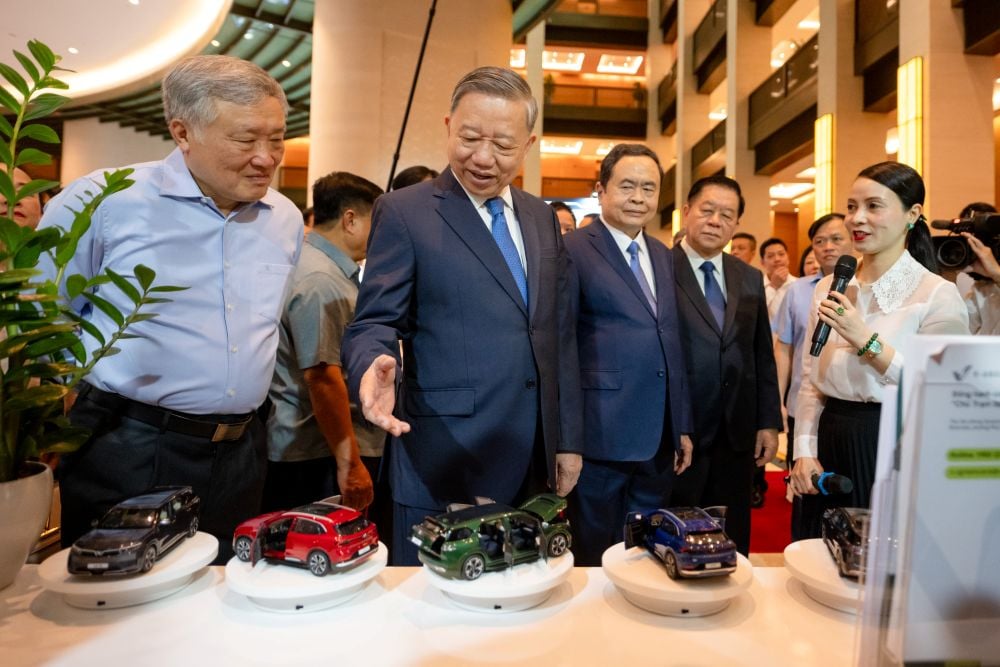
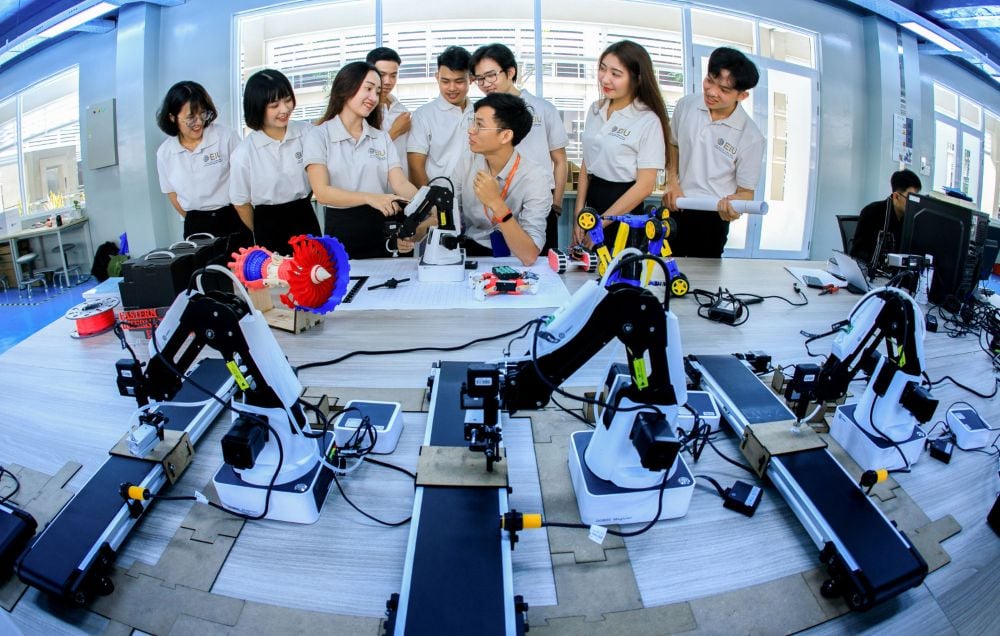








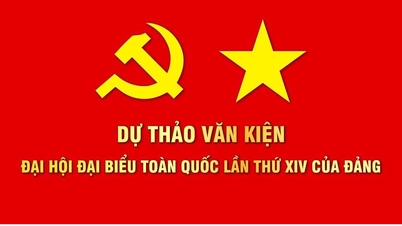

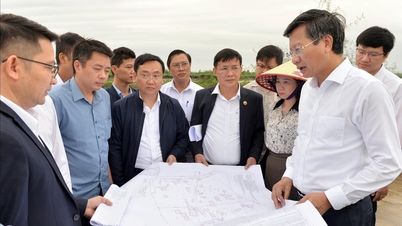

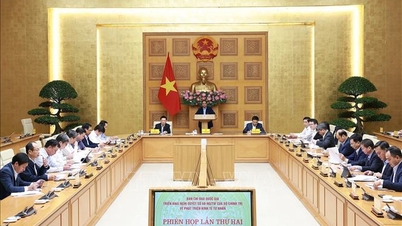


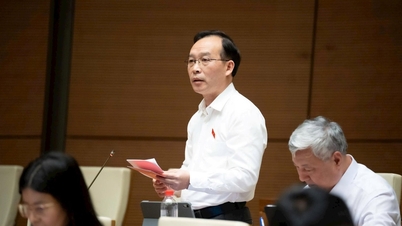



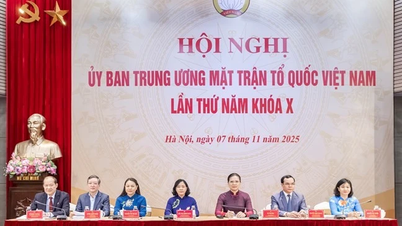









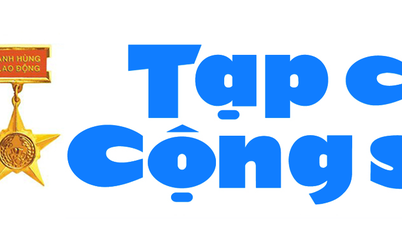
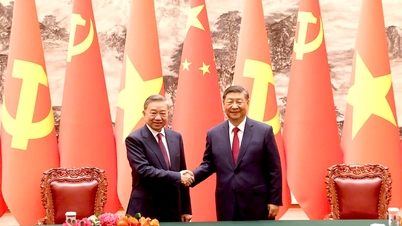

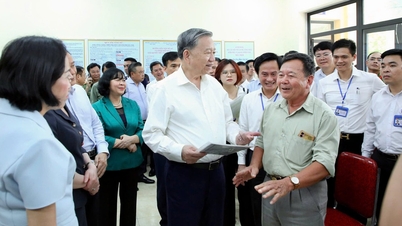
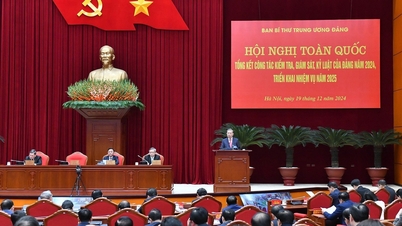


![[Photo] Da Nang: Hundreds of people join hands to clean up a vital tourist route after storm No. 13](https://vphoto.vietnam.vn/thumb/1200x675/vietnam/resource/IMAGE/2025/11/07/1762491638903_image-3-1353-jpg.webp)



















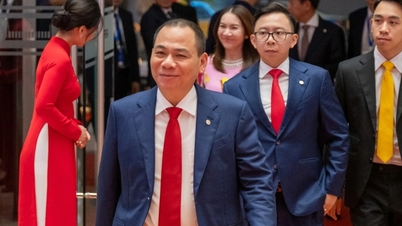



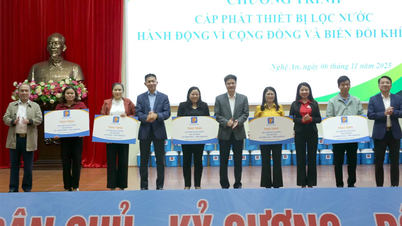


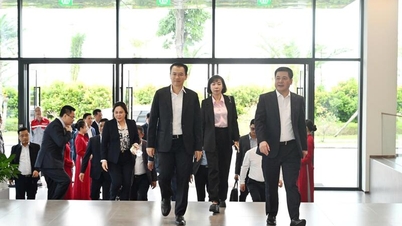
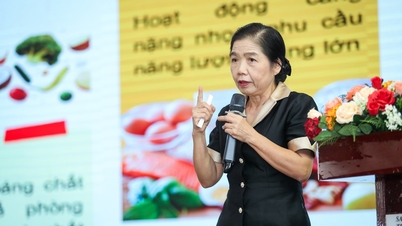
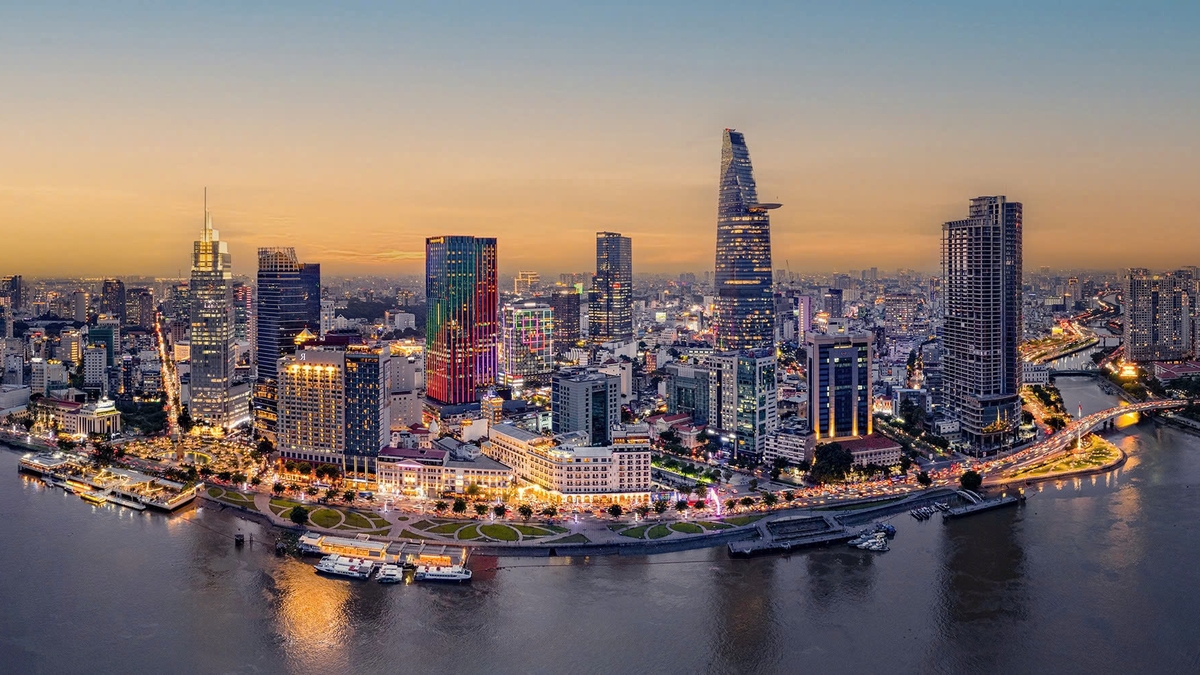









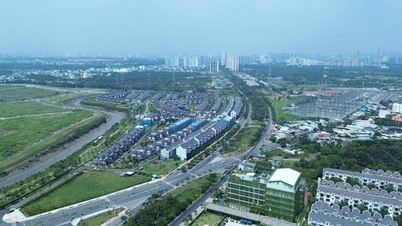







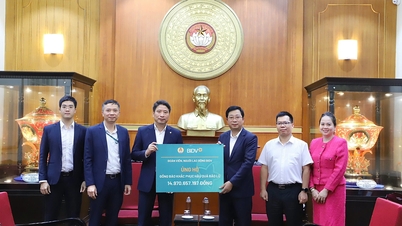

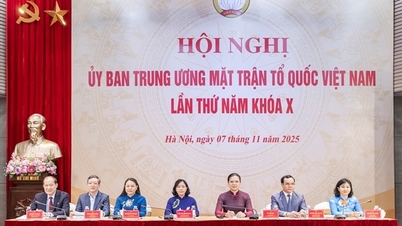
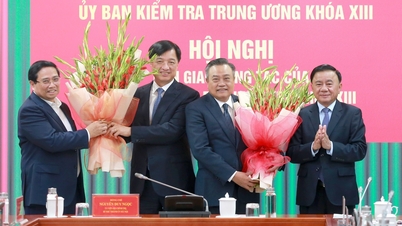



























Comment (0)